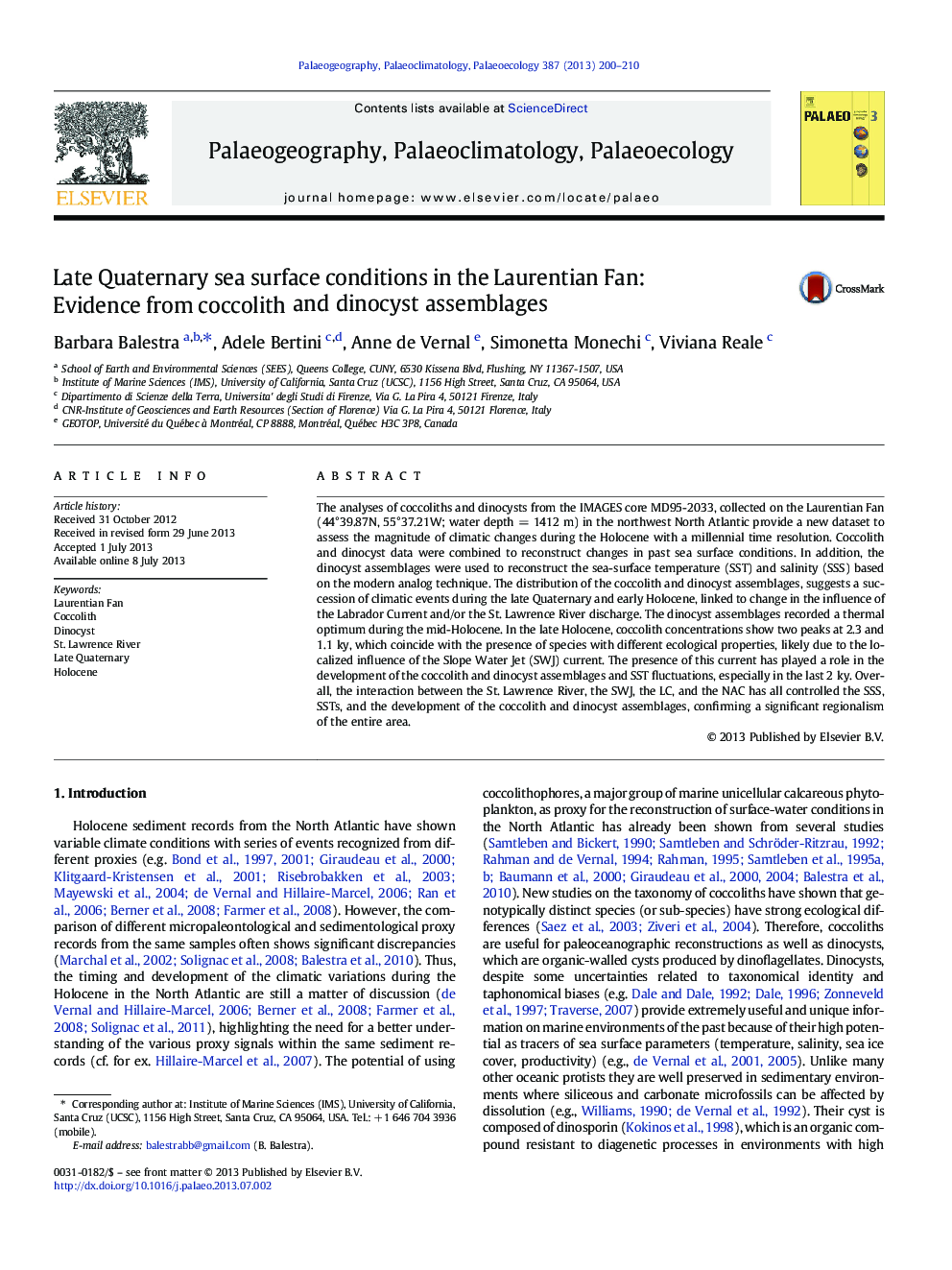| Article ID | Journal | Published Year | Pages | File Type |
|---|---|---|---|---|
| 6350209 | Palaeogeography, Palaeoclimatology, Palaeoecology | 2013 | 11 Pages |
Abstract
The analyses of coccoliths and dinocysts from the IMAGES core MD95-2033, collected on the Laurentian Fan (44°39.87N, 55°37.21W; water depth = 1412 m) in the northwest North Atlantic provide a new dataset to assess the magnitude of climatic changes during the Holocene with a millennial time resolution. Coccolith and dinocyst data were combined to reconstruct changes in past sea surface conditions. In addition, the dinocyst assemblages were used to reconstruct the sea-surface temperature (SST) and salinity (SSS) based on the modern analog technique. The distribution of the coccolith and dinocyst assemblages, suggests a succession of climatic events during the late Quaternary and early Holocene, linked to change in the influence of the Labrador Current and/or the St. Lawrence River discharge. The dinocyst assemblages recorded a thermal optimum during the mid-Holocene. In the late Holocene, coccolith concentrations show two peaks at 2.3 and 1.1 ky, which coincide with the presence of species with different ecological properties, likely due to the localized influence of the Slope Water Jet (SWJ) current. The presence of this current has played a role in the development of the coccolith and dinocyst assemblages and SST fluctuations, especially in the last 2 ky. Overall, the interaction between the St. Lawrence River, the SWJ, the LC, and the NAC has all controlled the SSS, SSTs, and the development of the coccolith and dinocyst assemblages, confirming a significant regionalism of the entire area.
Related Topics
Physical Sciences and Engineering
Earth and Planetary Sciences
Earth-Surface Processes
Authors
Barbara Balestra, Adele Bertini, Anne de Vernal, Simonetta Monechi, Viviana Reale,
